AWS News Blog
Amazon Lightsail – The Power of AWS, the Simplicity of a VPS
Some people like to assemble complex systems (houses, computers, or furniture) from parts. They relish the planning process, carefully researching each part and selecting those that give them the desired balance of power and flexibility. With planning out of the way, they enjoy the process of assembling the parts into a finished unit. Other people do not find this do-it-yourself (DIY) approach attractive or worthwhile, and are simply interested in getting to the results as quickly as possible without having to make too many decisions along the way.
Sound familiar?
I believe that this model applies to systems architecture and system building as well. Sometimes you want to take the time to hand-select individual AWS components (servers, storage, IP addresses, and so forth) and put them together on your own. At other times you simply need a system that is preconfigured and preassembled, and is ready to run your web applications with no system-building effort on your part.
In many cases, those seeking a preassembled system turned to a Virtual Private Server, or VPS. With a VPS, you are presented with a handful of options, each ready to run, and available to you for a predictable monthly fee.
While the VPS is a perfect getting-started vehicle, over time the environment can become constrained. At a certain point you may need to step outside the boundaries of the available plans as your needs grow, only to find that you have no options for incremental improvement, and are faced with the need to make a disruptive change. Or, you may find that your options for automated scaling or failover are limited, and that you need to set it all up yourself.
Introducing Amazon Lightsail
Today we are launching Amazon Lightsail. With a couple of clicks you can choose a configuration from a menu and launch a virtual machine preconfigured with SSD-based storage, DNS management, and a static IP address. You can launch your favorite operating system (Amazon Linux AMI or Ubuntu), developer stack (LAMP, LEMP, MEAN, or Node.js), or application (Drupal, Joomla, Redmine, GitLab, and many others), with flat-rate pricing plans that start at $5 per month including a generous allowance for data transfer.
Here are the plans and the configurations:
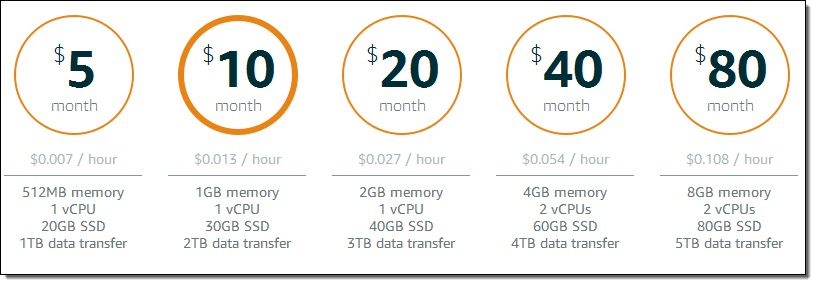
You get the simplicity of a VPS, backed by the power, reliability, and security of AWS. As your needs grow, you will have the ability to smoothly step outside of the initial boundaries and connect to additional AWS database, messaging, and content distribution services.
All in all, Lightsail is the easiest way for you to get started on AWS and jumpstart your cloud projects, while giving you a smooth, clear path into the future.
A Quick Tour
Let’s take a quick tour of Amazon Lightsail! Each page of the Lightsail console includes a Quick Assist tab. You can click on it at any time in order to access context-sensitive documentation that will help you to get the most out of Lightsail:

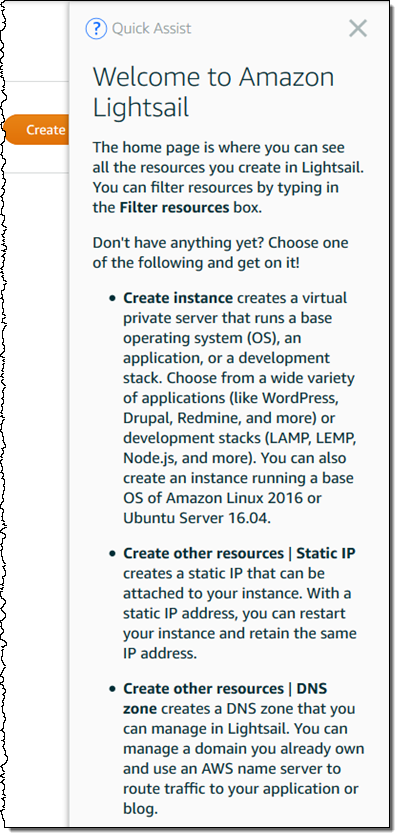

I click on Create Instance to get moving. I choose my machine image (an App and an OS, or simply an OS) an instance plan, and give my instance a name, all on one page:
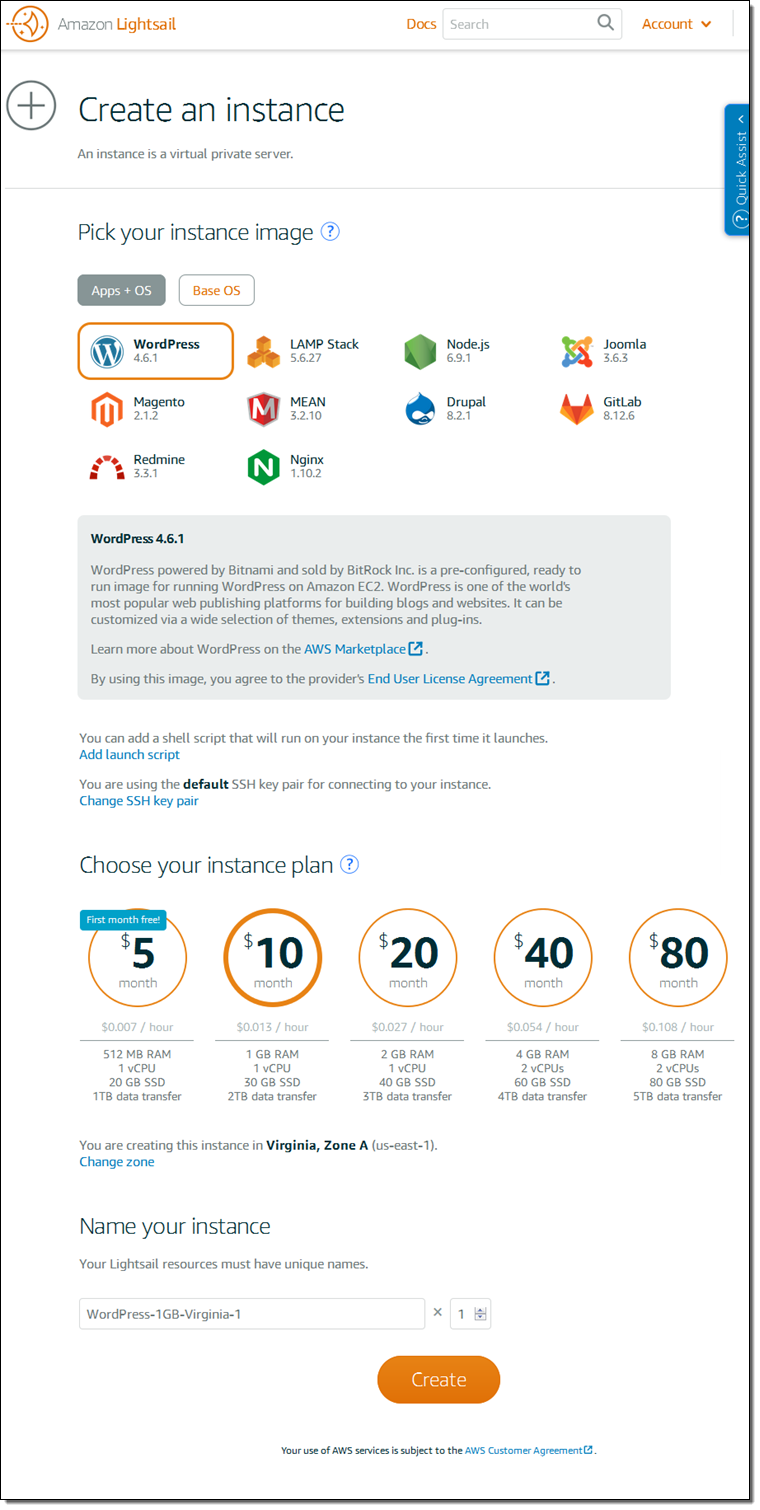
I can launch multiple instances, set up a configuration script, or specify an alternate SSH keypair if I’d like. I can also choose an Availability Zone. I’ll choose WordPress on the $10 plan, leave everything else as-is, and click on Create. It is up and running within seconds:
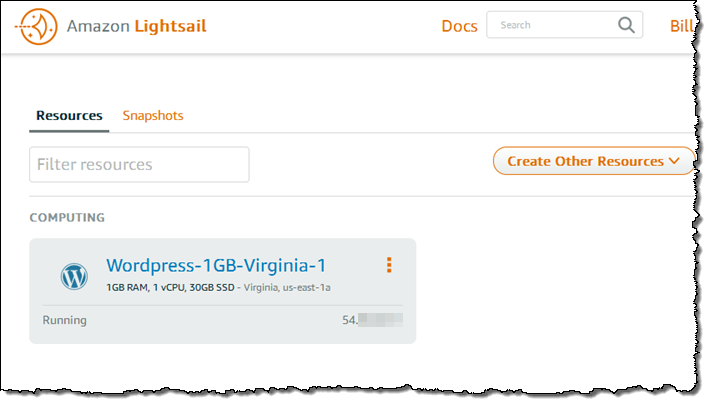
I can manage the instance by clicking on it:
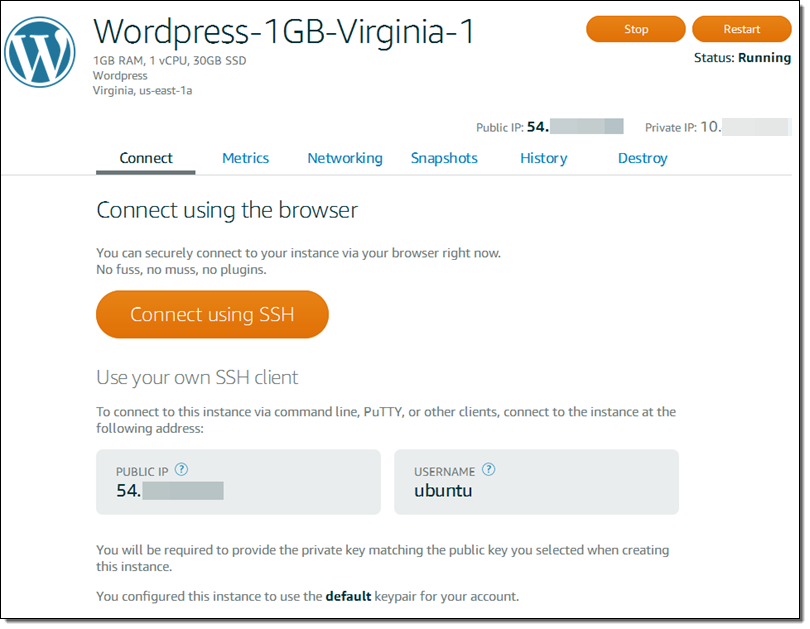
My instance has a public IP address that I can open in my browser. WordPress is already installed, configured, and running:
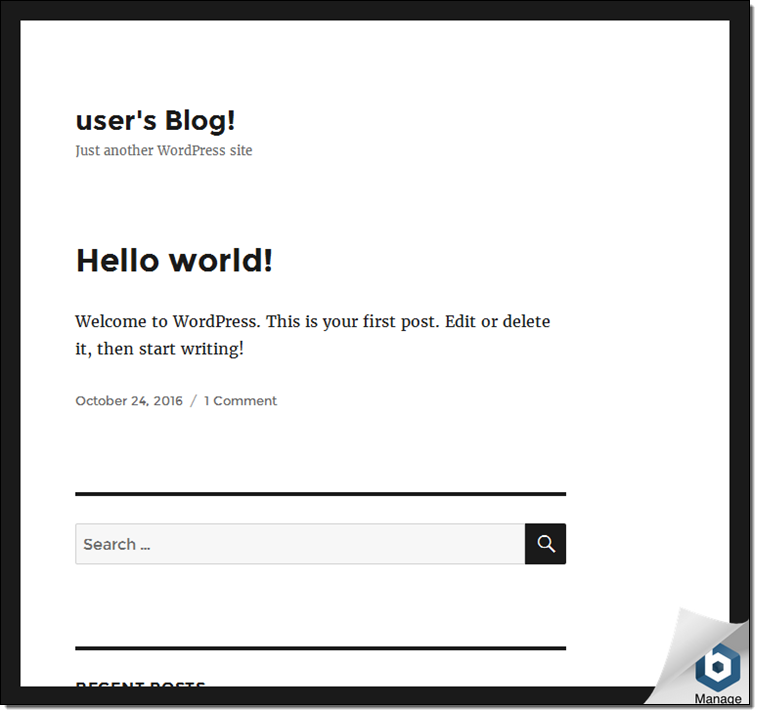
I’ll need the WordPress password in order to finish setting it up. I click on Connect using SSH on the instance management page and I’m connected via a browser-based SSH terminal window without having to do any key management or install any browser plugins. The WordPress admin password is stored in file bitnami_application_password in the ~bitnami directory (the image below shows a made-up password):
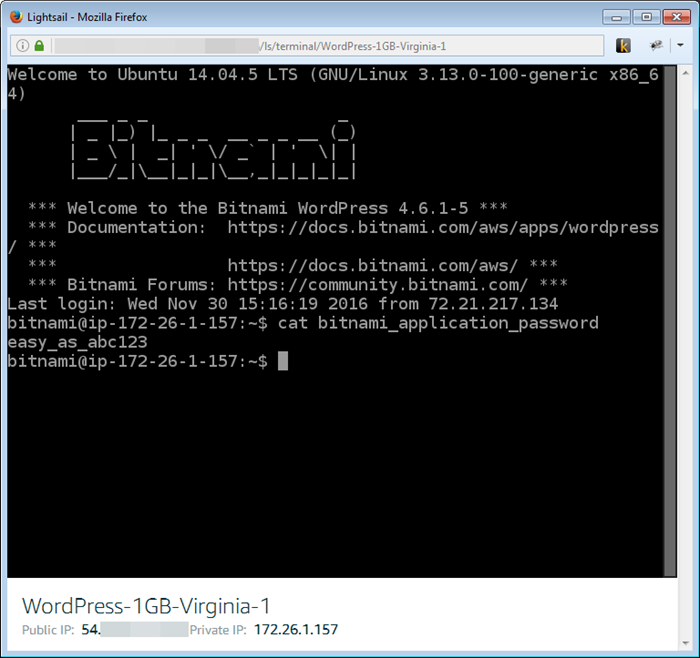
You can bookmark the terminal window in order to be able to access it later with just a click or two.
I can manage my instance from the menu bar:
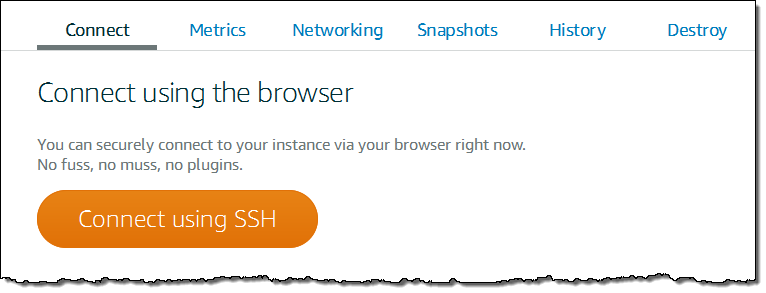
For example, I can access the performance metrics for my instance:
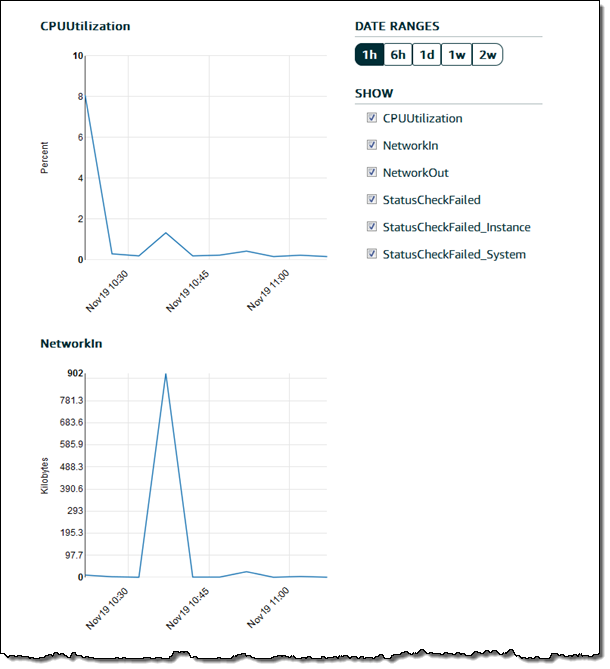
And I can manage my firewall settings:
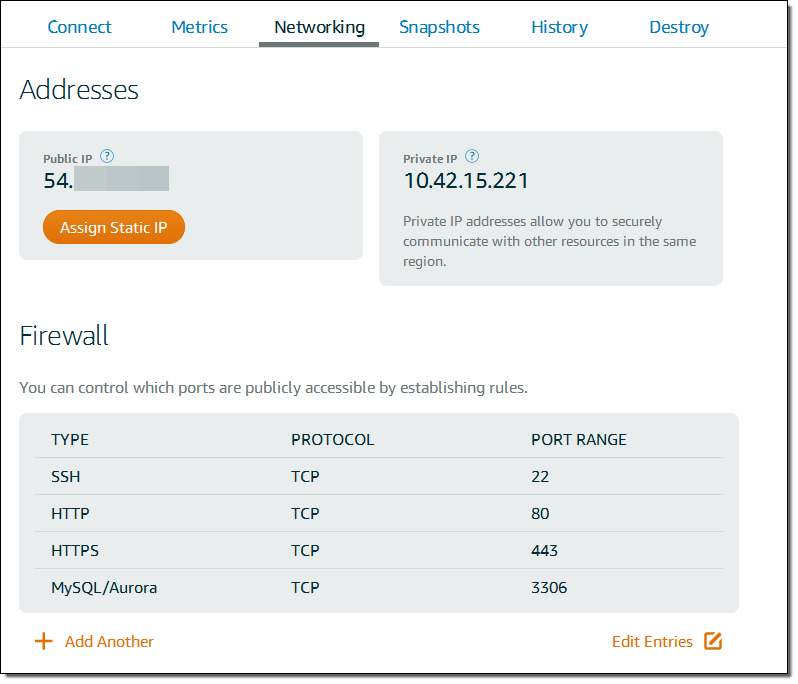
I can capture the state of my instance by taking a Snapshot:
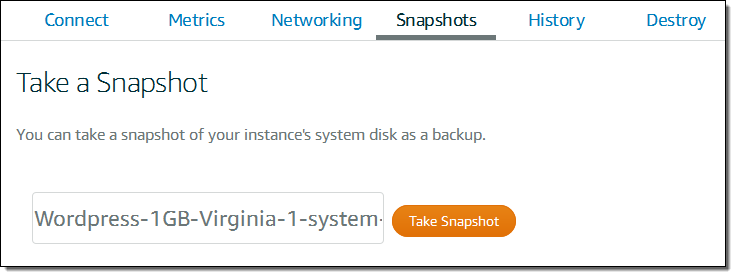
Later, I can restore the snapshot to a fresh instance:
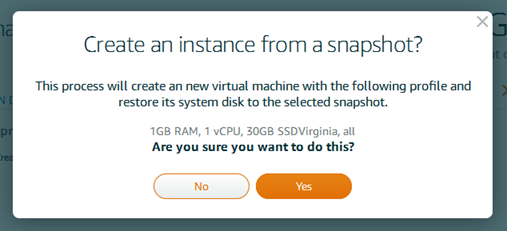
I can also create static IP addresses and make use of domain names:
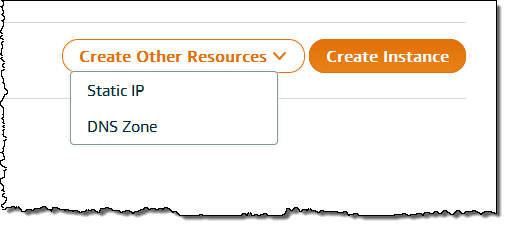
Advanced Lightsail – APIs and VPC Peering
Before I wrap up, let’s talk about a few of the more advanced features of Amazon Lightsail – APIs and VPC Peering.
As is almost always the case with AWS, there’s a full set of APIs behind all of the console functionality that we just reviewed. Here are just a few of the more interesting functions:
GetBundles– Get a list of the bundles (machine configurations).CreateInstances– Create one or more Lightsail instances.GetInstances– Get a list of all Lightsail instances.GetInstance– Get information about a specific instance.CreateInstanceSnapshot– Create a snapshot of an instance.CreateInstanceFromSnapshot– Create an instance from a snapshot.
All of the Lightsail instances within an account run within a “shadow” VPC that is not visible in the AWS Management Console. If the code that you are running on your Lightsail instances needs access to other AWS resources, you can set up VPC peering between the shadow VPC and another one in your account, and create the resources therein. Click on Account (top right), scroll down to Advanced features, and check VPC peering:
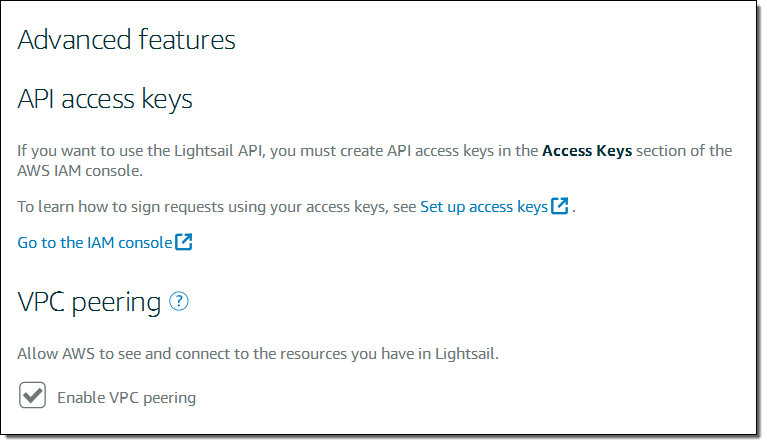
You can now connect your Lightsail apps to other AWS resources that are running within a VPC.
Pricing and Availability
We are launching Amazon Lightsail today in the US East (N. Virginia) Region, and plan to expand it to other regions in the near future.
Prices start at $5 per month.
You can learn more about Lightsail on January 17th during our webinar. Sign up here.
— Jeff;